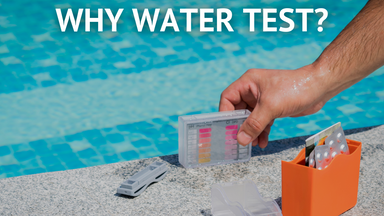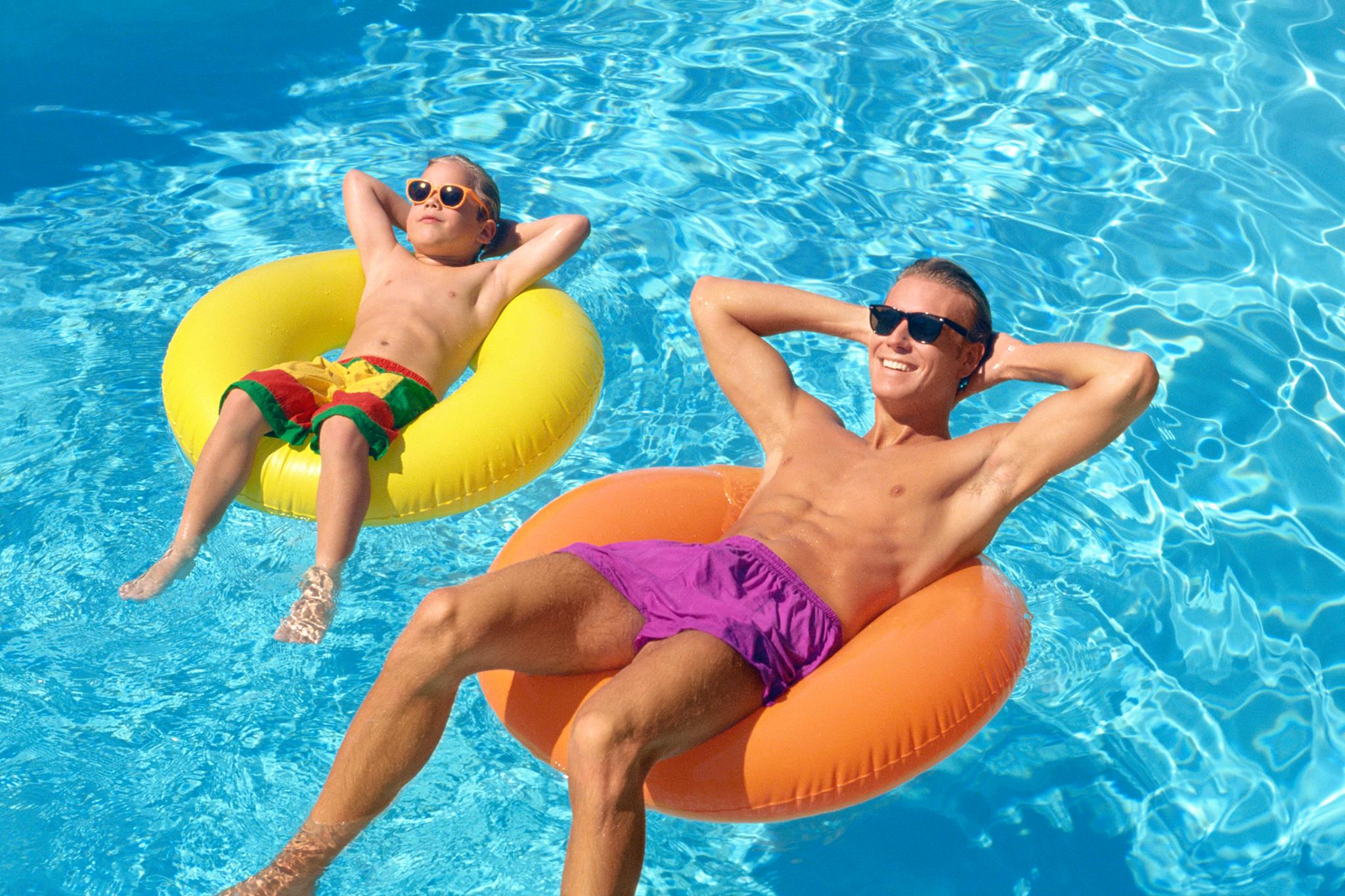Published by EZ Pool & Spa Supply on 05/23/2019
The Importance of Testing and Maintaining Your Pool Water
Don't Forget to Balance Your Pool Water!
The start of summer is here. It’s time for you to relax and your pool to shine as the fun times stay and the bad weather goes. Owning a pool is a very rewarding thing as you’re typically the star of the block and probably amongst family/friends as well. Summer ushers in pool parties and just like any party, they require both some preparation work as well as clean up. Just like you would be cleaning your home and your patio/deck area, it’s also important you check on your pool and the water in it to make sure it’s at its best not just for parties but really for the entire pool season. Everyone wants to have the most enjoyable and healthiest experience possible.
People add things to pool water and it’s unavoidable. Oil, sweat, sunscreen, dirt and many other things tend to accumulate and unfortunately work against your sparkling clear pool water. All of these things team up in various forms to change the chemistry of the water which then can lead to a whole bunch of things including cloudiness, algae growth, and many others. People also don’t like to be in environments where elements are off (think red, irritated eyes). There is good news however, as utilizing proactive pool care can keep everyone safe and healthy. Testing your water regularly and treating its symptoms allow for not just fun parties but amazing pool seasons.
The very first thing that should always be done is to run your pool pump. Moving water is your friend and will help you get good circulation and the best reading on your pool water. Getting the water moving will also help balance the chemicals that you will be using to treat your water. We offer a wide variety of Pump Selections including energy efficient variable speed models.
It’s typical practice to shock a pool a few days before gatherings or regularly (like once every couple of weeks) during the season. Shocking introduces large amounts of chlorine to the water all at once while assisting in restoring and/or maintaining the balance of chlorine. In pool care, chlorine is basically used as a disinfectant that kills any living organisms and bacteria as well as neutralizing ammonia and other possible contaminants. Chlorine comes in tablets, granules, or a liquid. To have a pool which is in balance, the parts per million range of Free Available Chlorine should be between 2.0 and 4.0. It really is not safe for you or anyone else to be swimming in a pool where this reading is anything below this range.
There are many other factors that need to be measure and addressed when it comes to balanced pool water. We offer many products called Balancing Chemicals which can assist in all of the following processes and adjustments.
Total Alkalinity refers to how much material is in the water which is alkaline (or neutral). This measurement is the first gathered and adjusted as it acts as a buffer for the pH which we’ll talk about next. For an alkalinity range you want a reading that is between 80 and 120 parts per million. This reading will need to be factored into whether you use sodium bisulfate to lower alkalinity or another product to increase it.
The opposite of this is the pH reading of the water. This measurement has to do with how acidic it is or it isn’t. The range goes from 1.0 all of the way up to 14.0 and the ideal range falls just above the middle at 7.4 to 7.6. Anything below 7 is considered acidic and anything over the acceptable range is considered alkaline conditions. Your water readings will typically either dictate the use of Sodium Carbonate which increases pH or Sodium Bisulfate which decreases it. Not having solid control of these numbers can actually cause damage to pool equipment as well as to the structure of your pool.
Something else to monitor closely is the hardness of the water. Hardness refers to the minerals contained in the water specifically calcium which is present in most water. An acceptable range of Calcium Hardness is 200 to 400 ppm. Calcium chloride raises calcium levels and high levels of calcium call for draining the pool either partially or completely refilling with fresher water.
Cyanuric acid is another factor to consider in keeping your pool in top shape. Cyanuric acid is basically sunblock for your pool. It helps keep your chlorine in your pool as constant sunlight exposure actually burns the chlorine levels right out of it. Cyanuric acid in your pool should be at levels from 30 to 50 ppm.If the water in your pool comes from a well you may also have to look at the levels of copper, iron, and manganese. An indication of the presence of these things would be a discoloration of the water without losing clarity or becoming cloudy.
Additionally, during parties or gatherings when the pool is in use, you can use products such as chlorine-free oxidizers that help in treating things like algae and bacteria while assisting in holding your pool’s clarity. After all, we all want that sparkly, clear pool water look, especially while entertaining.
Once the party ends, or typically during regularly scheduled treatment, you will want to shock the pool. Again, shocking consists of introducing a large amount of chlorine to the pool all at once to help sanitize the condition of the water. It may also be beneficial to do this process at night to combat any chlorine burn off from the summer sun.
As previously stated, it is a great idea to run your pool pump and cycle the water both before adding any chemicals as well as afterwards. This allows water to cycle freely and transport those helpful additives evenly through the water.
Now, you may be asking “How do I know what is going on with my water?” and that would be a great question. The answer is, through taking a sample directly out of the pool and running a test on it. You’ll want to use a small to medium water container, you’ll want to select an area of the pool that is away from things like the skimmer, the return, the pump and anything else that may interfere with obtaining a balanced reading. Make sure you rinse out whatever it is that you are using to collect your sample, and after choosing where in your pool to take water from, hold the container completely upside down and go into the water up to your elbow. Now you have a sample of the water in your pool that you will want to bring to a local store with a water lab where they can test the pool water that you’ve brought them. Once this is done, there are numbers that are generated and the technician will be able to advise on the status of your pool water and how to return it to all optimal levels.
In addition to this, there are also water test kits that are readily available on the market for those that want to run tests themselves and self-diagnose. These kits are typically very easy to use and once you become familiar with the process overall, are a great way to keep on top and maintain your best pool water possible.
It’s also very important to read your labels, know how many gallons your pool is, and make sure you are following all directions clearly and closely. We cannot stress this enough. Making sure you understand what is going into your pool, why it’s going there, and in what amounts will be the safest thing for all. We very much want you to enjoy the summer with your family and friends and your pool should definitely be a very big part. All of our retail locations offer water testing labs free of charge, complete with a dedicated team member who will be able to walk you through a course of action and products that will help get your pool water where it needs to be.







